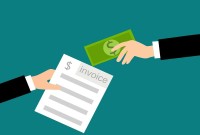- Home
- Business Processes
- Industry Knowledge
- Aerospace Industry
- Automotive Industry
- Banking Domain
- BFSI Industry
- Consumer/ FMCG Industry
- Chemicals Industry
- Engineering & Construction
- Energy Industry
- Education Domain
- Finance Domain
- Hospitality Domain
- Healthcare Industry
- Insurance Domain
- Retail Industry
- Travel and Tourism Domain
- Telecom Industry
- Leadership Skills
- eLearning
- Home
- Business Processes
- Procure to Pay
- Accounts Payable System
Accounts Payable System
We need a strong payables process so that it provides us with a high-productivity accounting solution to process vendor payments. An integrated payables process provides strong financial control so you can prevent duplicate payments, pay for only the goods and services you order and receive, and maximize supplier discounts. Understand the key features of an effective accounts payable system.
Given below are the key requirements from any automated world class accounts payable system:
Flexibility:
Payables system should provide flexibility for managing and streamlining invoice and payment processing. The flexibility is required in the areas of account structure, multiple calendars, multiple currencies, multiple bank accounts, multiple payment terms and how the system helps entering the information by defaulting linked information from the master data.
Accurate Invoice Processing:
Payables system should provide controls and automations to improve the efficiency of invoice processing and simultaneously help ensuring the accuracy of payables information. Some automation features or best practices are automatically matching an invoice to a purchase order by providing the purchase order number. Defaulting the accounting details and other information based on the matched purchase order.
Invoice Approvals:
As controllership and sox requirement the payable system should support two-, three- and four-way matching of purchase orders, invoices, receipts, and requester acceptance documents. Further it should provide approval mechanisms to ensure segregation of duties.
Multiple Payment Types:
System should provide capability to handle every form of payment, including manual payments, wire transfers, bank drafts, electronic funds transfers, and automatic checks. Further these payments should automatically or manually reconcile with the bank statements.
Supplier Interface:
System should enable resolve business issues quickly by providing immediate and accurate responses to supplier inquiries. Ability to view Invoice and Payment status information together to take informed decisions and have a meaningful conversation with the supplier.
Additional Information:
Ability to record detailed information about suppliers, including their purchasing, payment, and invoice processing preferences, flexible address formatting for global operations.
Electronic Data Interchange (EDI):
This allows exchanging payables data with external parties like banks and suppliers. Ability to use EDI drastically reduces many manual steps.
Pay on Receipt:
This is a financials feature that automatically creates supplier invoices based on receipts and purchase orders information. An advanced feature will automatically create matched invoices, automatically approve invoices and then make EDI or other electronic payments to the supplier.
Open Interfaces:
Ability to bring procure to pay data from other systems to the payables system.
Related Links
You May Also Like
-
Overview of Third-Party Logistics
Third-party logistics (abbreviated as 3PL, or TPL) is an organization's use of third-party businesses to outsource elements of its distribution, warehousing, and fulfillment services. A third-party logistics provider (3PL) is an asset-based or non-asset based company that manages one or more logistics processes or operations (typically, transportation or warehousing) for another company.
-
Types of Order Picking Methods in the Warehouse
There are many different types of picking in a warehouse and each one works as a customized solution for each business. Depending on the size of your warehouse and inventory, the manpower you have on hand, and the number of customer orders made each day, there may be certain methods that are more efficient for you than others.
-
Accounts Payable Journal Entry
Although in the large organizations the Procure to Pay Accounting process starts when the purchase order for supply of goods is released to the supplier. To keep things simple in the beginning we will discuss the core accounting entries related to the Accounts Payables process.
-
When a customer wants a product that has been stored in the warehouse, the same need to be picked off the shelf (or off the floor) and get it ready for shipping. Depending on how big is the warehouse, picking can take a while. (Many distribution centers cover more than 1 million square feet.). Hence, warehouse order picking methods are an important aspect within any warehouse.
-
Understand what we mean by accounts payable. Why the process is called accounts payable and what are the other names by which this process is known as. Download a ready recokner to keep with you.
-
Business Case of Multiple Warehouses
Adding extra warehouses to business provides many benefits such as reducing shipping costs, increasing storage capacity, and having warehouses for specific purposes to simplify overall warehouse management. Multiple warehouses allow you to organize your inventory in a way that helps your business be more effective.
-
Types of Inventory Count Processes
While dealing with lots of inventory in a warehouse, lots of things can go wrong. Shipments may not have the right number of units in them, or they could get damaged somewhere along the supply chain. Discrepancies in the stock may arise as part of every inventory control, and need to be corrected immediately after the inventory control procedure has been finished.
-
Miscellaneous Warehouse Processes
At the end of each inventory control, the Contractor provides the Ordering Person with an inventory report which contains a list of all stock adjustments. The Ordering Person uses the report to create, by use of his/her own means, necessary value and accounting adjustments related to the stock. Let us look at some to the mislaneous warehouse processes not covered earlier.
-
Warehouse management and distribution logistics involve the physical warehouse where products are stored, as well as the receipt and movement of goods takes place. Warehouse management aims to control the storage and movement of products and materials within a warehouse. These operations include the receipting of inwards goods, tracking, stacking and stock movement through the warehouse.
-
What is the difference between Warehouse Management & Inventory Management?
The terms “inventory management” and “warehouse management” are sometimes mistakenly used interchangeably as they both deal with operations and products of industries. Despite their few similarities, there are many notable differences between warehouse and inventory management systems.
Explore Our Free Training Articles or
Sign Up to Start With Our eLearning Courses

About Us
Learning
© 2023 TechnoFunc, All Rights Reserved










